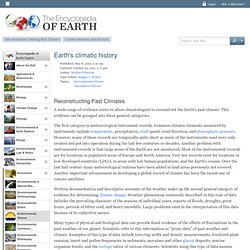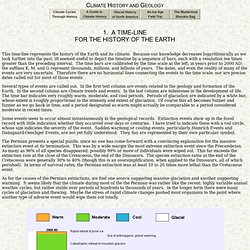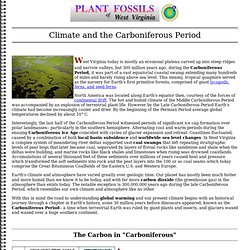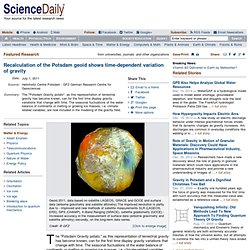

The Periodic Table of Elements Scaled to Show The Elements' Actual Abundance on Earth. When you learned about The Periodic Table of Elements in high school, it probably didn't look like this.

Above, we have a different way of visualizing the elements. Created by Professor William F. 64% of US Now in Drought, Yet Most States Don't Consider Climate Change's Effect on Water. Al Jazeera English/CC BY-SA 2.0 And it gets drier...

The US Department of Agriculture has declared half of all US counties disaster areas due to the expanding drought, adding 200 counties across 12 states to those experiencing drought conditions. NASA scientist links climate change, extreme weather. James Hansen argues that rising global temperatures are fueling an increase in extreme weatherHe cites a 2010 heat wave in Russia and last year's Texas drought as examplesHansen, an activist, directs research at the NASA Goddard Institute for Space Studies (CNN) -- What do the 2010 heat wave in Russia, last year's Texas drought, and the 2003 heat wave in Europe have in common?
All are examples of extreme weather caused by climate change, according to a new study from NASA scientist James Hansen. "This is not a climate model or a prediction but actual observations of weather events and temperatures that have happened," he wrote in a Washington Post opinion piece meant to accompany the study. Global Warming's Terrifying New Math. A Ray of Hope on Climate Change. YOU don’t have to be a climate scientist these days to know that the climate has problems.

You just have to step outside. The United States is now enduring its warmest year on record, and the 13 warmest years for the entire planet have all occurred since 1998, according to data that stretches back to 1880. No one day’s weather can be tied to global warming, of course, but more than a decade’s worth of changing weather surely can be, scientists say. Meanwhile, the country often seems to be moving further away from doing something about climate change, with the issue having all but fallen out of the national debate. Behind the scenes, however, a somewhat different story is starting to emerge — one that offers reason for optimism to anyone worried about the planet. Paul Gilding: The Earth is full. And about time for rights to nature? By Begonia Filgueira. It took until 1998 for the UK Parliament to incorporate human rights directly into the domestic legal system.

In light of the dangers posed by climate change, is it time to go one step further and grant rights to the Earth herself? Bolivia has done just that – the Mother Earth Rights Law (Ley 071(21 December 2010)) has now come into force. Congratulations to everyone involved in drafting and promoting this law. With Evo Morales’ Party (the Movement Towards Socialism) having a majority in Congress and the Senate, this law passed without much opposition. Earth's climatic history. Reconstructing Past Climates A wide range of evidence exists to allow climatologists to reconstruct the Earth's past climate.

This evidence can be grouped into three general categories. The first category is meteorological instrument records. Common climatic elements measured by instruments include temperature, precipitation, wind speed, wind direction, and atmospheric pressure. CLIMATE CYCLES AND GEOLOGICAL HISTORY: Geological Time Line. This time-line represents the history of the Earth and its climate.

Because our knowledge decreases logarithmically as we look further into the past, iIt seemed useful to depict the timeline by a sequence of bars, each with a resolution ten times greater than the preceding interval. The time bars are calibrated by the time scale at the left, in years prior to 2000 AD; the suffixes K, M, and G represent thousands, millions, and billions of years.
The dates, and even the reality of many of the events are very uncertain. Therefore there are no horizontal lines connecting the events to the time scale; nor are precise dates called out for most of those events. Several types of events are called out. Some events seem to occur almost instantaneously in the geological records. The Permian presents a special puzzle, since no one has come forward with a convincing explanation for the massive extinction event at its termination. Return to Climate Change home page. Climate during the Carboniferous Period. Climate and the Carboniferous Period West Virginia today is mostly an erosional plateau carved up into steep ridges and narrow valleys, but 300 million years ago, during the Carboniferous Period, it was part of a vast equatorial coastal swamp extending many hundreds of miles and barely rising above sea level.

Deep oceans warming at an alarming rate. Two newly published studies are helping scientists trace millions of years of Antarctica's climate history, including an age when parts of the continent were as warm as the California coast is today.

One of the studies focuses on an ice core taken from Antarctica's Taylor Glacier, and uses readings of radioactive krypton to confirm that the sample goes back 120,000 years. The researchers behind that study, appearing in the Proceedings of the National Academy of Sciences, say the same technique could provide more accurate dates for ice samples going back as far as 1.5 million years. "That is very exciting, because a lot of interesting things happened with the earth's climate prior to 800,000 years ago that we currently cannot study in the ice-core record," Christo Buizert, a researcher at Oregon State University who is the study's lead author, said in a news release. Xavier Fain / NSF Now researchers plan to go after Antarctica's oldest ice. Antarctica in 40 million B.C. Modern World. Here's what Pangea looks like mapped with modern political borders. What Did the Continents Look Like Millions of Years Ago? - Geoff Manaugh & Nicola Twilley.
The paleo-tectonic maps of retired geologist Ronald Blakey are mesmerizing and impossible to forget once you've seen them.

Catalogued on his website Colorado Plateau Geosystems, these maps show the world adrift, its landscapes breaking apart and reconnecting again in entirely new forms, where continents are as temporary as the island chains that regularly smash together to create them, on a timescale where even oceans that exist for tens of millions of years can disappear leaving only the subtlest of geological traces.
With a particular emphasis on North America and the U.S. southwest—where Blakey still lives, in Flagstaff, Arizona—these visually engaging reconstructions of the Earth's distant past show how dynamic a planet we live on, and imply yet more, unrecognizable changes ahead. These images come from Ron Blakey's maps of the paleotectonic evolution of North America. But I was late getting into the computer. Basically, during my graduate work I never used a computer for anything.
Recalculation of the Potsdam geoid shows time-dependent variation of gravity. The "Potsdam Gravity potato," as this representation of terrestrial gravity has become known, can for the first time display gravity variations that change with time.

The seasonal fluctuations of the water balance of continents or melting or growing ice masses, i.e. climate-related variables, are now included in the modeling of the gravity field. "EIGEN-6C" is the name of this latest global gravity field model of the GFZ German Research Centre for Geosciences. It was recently calculated in Potsdam in cooperation with the Groupe de Recherche de Géodésie Spaciale from Toulouse. This new gravity field model is based on measurements of the satellites LAGEOS, GRACE and GOCE. These were combined with ground-based gravity measurements and data from the satellite altimetry.
Earth’s Core - The Enigma 1,800 Miles Below Us. Geologists have long known that ’s core, some 1,800 miles beneath our feet, is a dense, chemically doped ball of iron roughly the size of Mars and every bit as alien. It’s a place where pressures bear down with the weight of 3.5 million atmospheres, like 3.5 million skies falling at once on your head, and where temperatures reach 10,000 degrees Fahrenheit — as hot as the surface of the Sun. It’s a place where the term “ironclad agreement” has no meaning, since iron can’t even agree with itself on what form to take. It’s a fluid, it’s a solid, it’s twisting and spiraling like liquid confetti. Researchers have also known that Earth’s inner Martian makes its outer portions look and feel like home. The core’s heat helps animate the giant jigsaw puzzle of tectonic plates floating far above it, to build up mountains and gouge out seabeds.
Scientists Discover Massive “Ocean” Near Earth’s Core. Image via NASA Earth is a rather watery place. At least, when compared to some of the other rocky planets, our world seems to be drowning in water. True, there are a few bodies in our solar system that host far more H2O than our own Pale Blue Dot (take, for example, Europa). Earth 520: Plate Tectonics and People: Foundations of Solid Earth Science. Printer-friendly version The Earth's magnetic field occasionally undergoes a spontaneous reversal in which the north and south poles switch places. The mechanism of reversals are still not completely understood, although simulations on supercomputers have been able to reproduce them. Hidden Portals in Earth's Magnetic Field. Hidden Portals in Earth's Magnetic Field June 29, 2012: A favorite theme of science fiction is "the portal"--an extraordinary opening in space or time that connects travelers to distant realms.
Solar Storm Dumps Gigawatts into Earth's Upper Atmosphere. Solar Storm Dumps Gigawatts into Earth's Upper Atmosphere. Earth's Inconstant Magnetic Field. Earth's Inconstant Magnetic Field Our planet's magnetic field is in a constant state of change, say researchers who are beginning to understand how it behaves and why. Listen to this story via streaming audio, a downloadable file, or get help. NASA's New Satellite Captures Amazing Hi-Res Image of Earth. You've seen Earth, but you've never seen it like this.
Maps on the Web. Digital Globes, a New Way to View the World. Chip Clark/Smithsonian Institution EDUCATIONAL The six-foot-wide "Science on a Sphere" was created by NOAA as a tool to teach earth sciences. Across a sunblasted courtyard and up a dingy staircase, another globe — a digital globe — stands in a darkened room. This globe is a shining sphere of light. Science & Environment - Timeline of the far future.